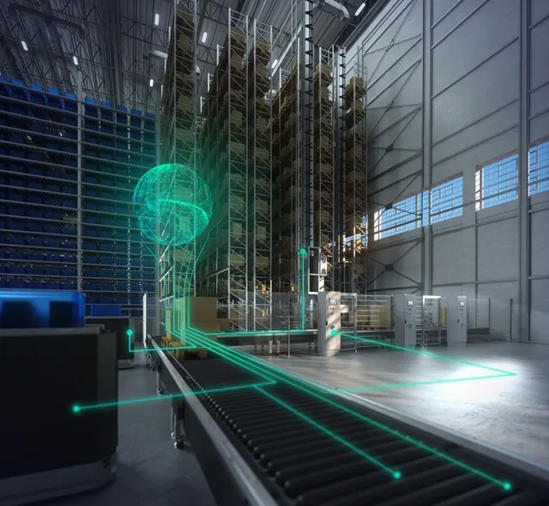Under the motto “Intelligent intralogistics — experience the flow”, Siemens will present at this year’s Logimat in Hall 3, Booth D11, how a holistic digital twin is developed with the Digital Enterprise Portfolio. Simulation based on a digital twin makes it possible to design applications and processes in intralogistics in a highly efficient, flexible and intelligent way. Against the background that markets and requirements have changed in the last two years and the intralogistics industry has to cope with a strongly growing e‑commerce, this contributes to sustainable competitiveness. Here, increasing stock turnover rates with shorter storage periods, small order quantities with high delivery speeds, rising return rates and the short-term increase in delivery quantities require flexible and scalable intralogistics processes. The new requirements can be met with the help of digitization and automation.
At Logimat, the company will use a Dynamic Gapper application to demonstrate how a digital twin helps to meet the new intralogistics requirements. In this typical intralogistics application, packages of different sizes and distances from one another are brought together by two converging conveyor belts onto a common conveyor belt, separated in a defined manner and the distances between the packages regulated. The technology group shows both the real application and its simulation.
The simulation takes place before the actual design is started. This allows the application to be virtually optimized and validated, reducing development and engineering time for machine builders by up to 35 percent. Operators of logistics centers also benefit from the digital twin, because with its help commissioning times can also be reduced by up to 40 percent. The entire hardware as well as the control system with all functions including communication, safety and web server can be simulated within the scope of a virtual commissioning. In the meantime, the real application can be built and wired and is ready for the actual commissioning. This then mainly consists of loading the program into the CPU and transferring the parameters to the drives.
The real application can also be further optimized during operation. By connecting to a cloud or edge platform, valuable process data can be collected and analyzed during operation. This enables operators of intralogistics centers to respond quickly to changes such as increased delivery volumes and create sustainable, flexible and scalable processes.
The Group supports machine manufacturers and operators of logistics centers on the path to digital transformation. The Digital Enterprise Portfolio offers an integrated product range of software-based systems and automation technologies at the heart of which is the digital twin. By using the digital twin of material handling equipment, warehouse operations and performance, the entire value chain is simulated and validated and can thus be designed optimally and efficiently. This consistently increases the efficiency of machine and plant construction and operation, minimizes error rates and downtimes, and shortens development times. Through the seamless interaction of the real and digital worlds, the technology group helps to increase the productivity and flexibility of plants and thus sustainably reduce the costs and energy consumption of logistics centers.

















